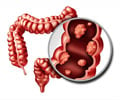Head and neck cancer cells communicate with the nearby healthy cells and extend their growth in multiple locations. Developing newer therapeutics that interrupt communications between malignant and healthy cells could improve outcomes in patients with head and neck cancer.

"Our research demonstrated that cancer cells also communicate with healthy cells of their own cell type to facilitate spread," said principal investigator Nisha D' Silva, the Donald A. Kerr Endowed Collegiate Professor of Oral Pathology.
DMBT1 could be the game-changer in cancer development
Previous evidence indicated that there is an underlying gene-silencing mechanism in oral cancer development where a specific gene, DMBT1 is regulated and prevented from producing proteins.
Thus, this research observed whether this gene plays any role in the dissemination of head and neck cancer cells. The outcomes of the study proved that head and neck cancer cells manufacture two proteins that can suppress DMBT1 in the adjacent healthy cells.
While the researchers looked at this mechanism in mice, chick embryos and cultures of human cancer cells, most of the control tumors in the chick embryos that had lower DMBT1 gene expressions underwent a process called metastasis, in which cancer cells outspread from the primary site to the nearby tissue sites.
Advertisement
Nisha D' Silva concluded, "The importance of this paper is that loss of DMBT1 in cancer cells and adjacent normal tissue benefits cancer cells, allowing them to travel in tiny groups away from the main tumor."
Advertisement
Source-Medindia













